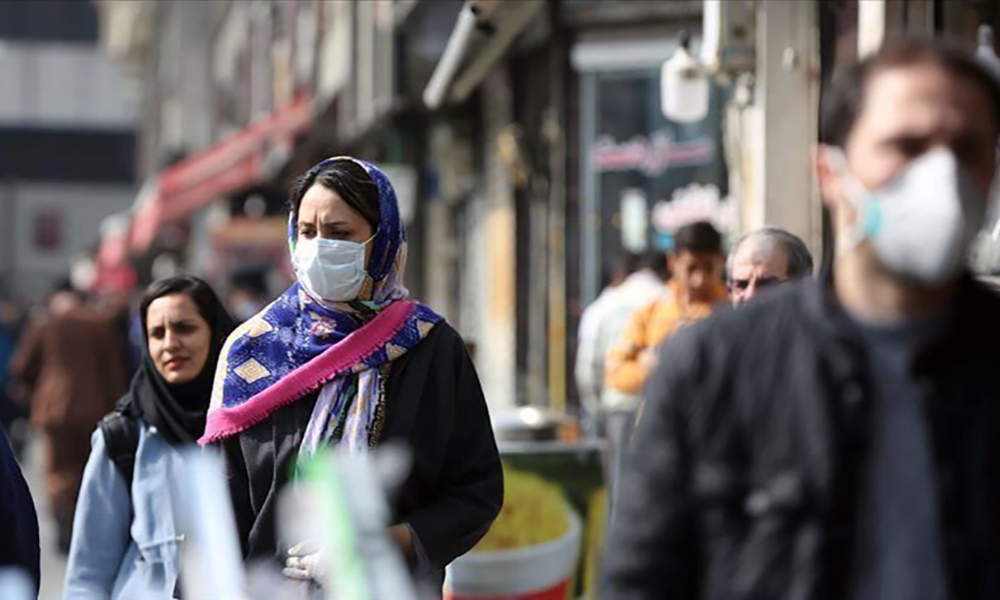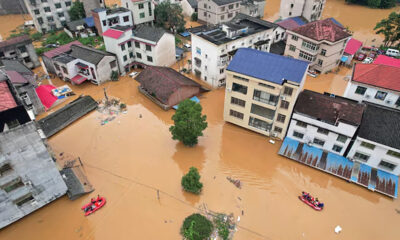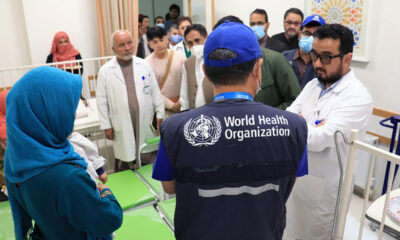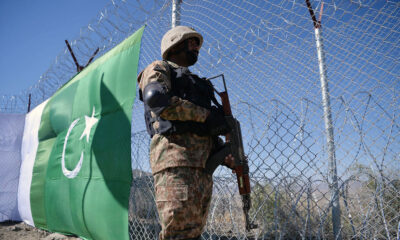COVID-19
Australia COVID-19 cases surge, overloading testing system

Australian COVID-19 cases soared to a pandemic record on Tuesday as the Omicron variant ripped through most of the country, driving up hospitalisation rates as the once-formidable testing regime buckled under lengthy wait times and stock shortages.
The country which for a year and half used a system of constant testing, contact tracing and lockdowns to squash most outbreaks, clocked 47,799 new infections, up nearly a third on Monday’s number which was also a record, Reuters reported.
Political leaders have pointed to a largely successful, if slow, vaccination rollout and few deaths, relative to new case numbers – four on Tuesday. But hospitalisations, another closely watched measure, are higher than at any other time in the pandemic: 1,344 in the most populous state New South Wales.
In Victoria, the second state, the authorities said one in four people showing up for a swab test was returning a positive result. Almost everyone in that state’s intensive care units was unvaccinated, the authorities said. Victoria had 14,020 new cases, nearly double the previous day’s count.
Other states which had spent much of the pandemic with domestic borders closed and long stretches without a new case, showed similar numbers. A month ago, Queensland reported a day with six new cases; on Tuesday it recorded 5,699.
Across the country, political leaders have been re-shaping their messaging for a population that is more than 90% vaccinated and a variant that some medical experts say is more transmissable but less virulent than previous strains.
After nearly two years of campaigning for widespread testing, the authorities want asymptomatic people to bypass government-funded clinics, where high volumes have blown out turnaround times to several days, and take their own rapid antigen tests.
But that has brought a new pressure point: an explosion in sales of home testing kits, resulting in reports of stockpiling, empty shelves and inflated prices on the few kits which have not yet been sold. Prime Minister Scott Morrison has ruled out subsidising the personal testing kits, citing a heightened role for “personal responsibility”.
“The problem at the moment is that the lack of (rapid antigen tests) is completely hampering ‘personal responsibility’ and it is a frustration that is a glaring hole in the current management of COVID,” Chris Moy, vice president of the Australian Medical Association, told ABC Radio on Tuesday, using Morrison’s phrase.
Opposition leader Anthony Albanese, who most polls suggest will defeat Morrison at an election due within months, said that “when it comes to healthcare, and rapid antigen testing, the prime minister has said that you are on your own”.
The country’s competition regulator said it would set up a team to look into complaints about allegations of price gouging for the at-home rapid antigen tests.
Despite the spike in infections fuelled by Omicron, dual-dose vaccination levels of nearly 92% in people above 16 have helped Australia to keep the death rate lower than the previous virus outbreaks.
Authorities do not specify the coronavirus variant that caused the deaths, although New South Wales officials said 74% of patients in the state’s intensive care units since Dec. 16 were infected with the Delta variant.
The record spike in infections and hospitalisations comes as 2 million more Australians became eligible for their COVID-19 booster shots from Tuesday after authorities shortened the wait time between second and third shots to four months.
Just over 2.5 million Australians have so far received their booster shot, which health officials hope will keep rates of death and serious illness low.
Australia crossed half a million coronavirus cases since the pandemic began, with nearly 50% in the last two weeks. Still, its 547,160 cases and 2,270 deaths, from a population of 25 million, are lower than numbers seen in many developed countries.
COVID-19
WHO declares end to COVID global health emergency

The World Health Organization said Friday that COVID-19 no longer qualifies as a global emergency, marking a symbolic end to the devastating coronavirus pandemic that triggered once-unthinkable lockdowns, upended economies and killed millions of people worldwide.
The announcement, made more than three years after WHO declared the coronavirus an international crisis, offers some relief, if not an ending, to a pandemic that stirred fear and suspicion, hand-wringing and finger-pointing across the globe, AP reported.
The U.N. health agency’s officials said that even though the emergency phase was over, the pandemic hasn’t finished, noting recent spikes in cases in Southeast Asia and the Middle East.
WHO says thousands of people are still dying from the virus every week, and millions of others are suffering from debilitating, long-term effects.
“It’s with great hope that I declare COVID-19 over as a global health emergency,” WHO Director-General Tedros Adhanom Ghebreyesus said.
“That does not mean COVID-19 is over as a global health threat,” he said, warning that new variants could yet emerge. Tedros noted that while the official COVID-19 death toll was 7 million, the real figure was estimated to be at least 20 million.
Tedros said the pandemic had been on a downward trend for more than a year, acknowledging that most countries have already returned to life before COVID-19.
He bemoaned the damage that COVID-19 had done to the global community, saying the pandemic had shattered businesses, exacerbated political divisions, led to the spread of misinformation and plunged millions into poverty.
When the U.N. health agency first declared the coronavirus to be an international crisis on Jan. 30, 2020, it hadn’t yet been named COVID-19 and there were no major outbreaks beyond China.
More than three years later, the virus has caused an estimated 764 million cases globally and about 5 billion people have received at least one dose of vaccine.
In the U.S., the public health emergency declaration made regarding COVID-19 is set to expire on May 11, when wide-ranging measures to support the pandemic response, including vaccine mandates, will end. Many other countries, including Germany, France and Britain, dropped most of their provisions against the pandemic last year.
When Tedros declared COVID-19 to be an emergency in 2020, he said his greatest fear was the virus’ potential to spread in countries with weak health systems.
Most recently, WHO has struggled to investigate the origins of the coronavirus, a challenging scientific endeavor that has also become politically fraught.
COVID-19
COVID-19 in Iran: Nearly 900 new cases, 24 deaths recorded

The Iranian health ministry announced on Sunday that more than 890 new cases of COVID-19 have been identified across the country during the past 24 hours, adding that 24 patients have died in the same period of time, Fars News Agency reported.
“A sum of 891 new patients infected with COVID-19 have been identified in the country based on confirmed diagnosis criteria during the past 24 hours,” the Iranian Health Ministry’s Public Relations Center said on Sunday, adding, “454 patients have been hospitalized during the same time span.”
The ministry’s public relations center said 611 people infected with COVID-19 are in critical condition.
COVID-19
China says 200 million treated, pandemic ‘decisively’ beaten

China says more than 200 million of its citizens have been diagnosed and treated for COVID-19 since it lifted strict containment measures beginning in November.
With 800,000 of the most critically ill patients having recovered, China has “decisively beaten” the pandemic, according to notes from a meeting of the ruling Communist Party’s all-powerful Politburo Standing Committee presided over by President and party leader Xi Jinping, AP reported.
China enforced some of the world’s most draconian lockdowns, quarantines and travel restrictions and still faces questions about the origins of the virus that was first detected in the central Chinese city of Wuhan in late 2019. Heavy-handed enforcement prompted rare anti-government protests and took a heavy toll on the world’s second-largest economy.
The official Xinhua News Agency quoted Xi as saying that policies to control the outbreak had been “entirely correct.” The abrupt lifting in November and December of the “zero COVID” policy that had sought to eliminate all cases of the virus led to a surge in infections that temporarily overwhelmed hospitals.
Case numbers have since peaked and life has largely returned to normal, although international travel in and out of China has yet to return to pre-pandemic levels.
China is now transitioning to a post-pandemic stage after a fight against the outbreak that was “extraordinary in the extreme,” Xinhua said.
The government will continue to “optimize and adjust prevention and control policies and measures according to the times and situations with a strong historical responsibility and strong strategic determination,” Xinhua said.
-

 Sport4 days ago
Sport4 days agoOlympics finally here; What you need to know
-

 Latest News5 days ago
Latest News5 days agoOCHA reports 110 die in landmine explosions in Afghanistan every month
-

 Regional5 days ago
Regional5 days agoChina braces for twin tropical cyclones after deadly flash floods
-

 Health4 days ago
Health4 days agoHealth partners provide services 589,205 people in Afghanistan in last month
-

 Latest News4 days ago
Latest News4 days agoAfghanistan’s Hajj ministry confirms death of 27 pilgrims in Mecca and Medina
-

 Business5 days ago
Business5 days agoConference on Islamic microfinance kicks off in Kabul
-

 Sport4 days ago
Sport4 days agoACB proposes ODI fixtures against top-tiered teams
-

 Latest News4 days ago
Latest News4 days agoIslamabad claims three terrorists killed at Pakistan-Afghanistan border

























